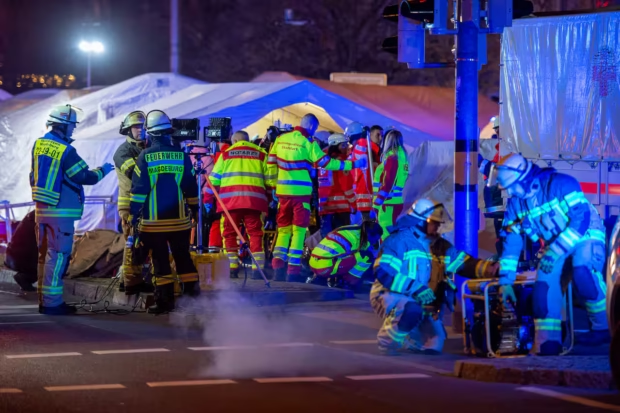
The Syrian crisis, one of the longest and deadliest conflicts of the 21st century, is still ongoing in 2024 and has had a devastating impact on Syria, its population, and the wider region of the Middle East. Fueled by political upheaval, ethnic and sectarian rivalry, and foreign intervention, the Syrian civil war has developed into a complex crisis with global ramifications. As we reflect on the ongoing conflict, the humanitarian challenges, and the international community’s responses, it’s important to understand the factors that have shaped the Syrian crisis over the past decade, its impact on millions of Syrians, and the prospects for peace.
The Syrian Crisis 2024: Unraveling the Story
As of 2023, the Syrian crisis is now in its thirteenth consecutive year, having begun in 2011, and without much hope for a resolution soon. The war began with peaceful demonstrations against President Bashar al-Assad’s authoritarian government, joined by a broader wave of the Arab Spring. But what started as demands for democratic reforms soon turned into a full-blown civil war as the government responded with violent crackdowns. Gradually, the conflict turned into a proxy war for regional and global powers, which further prolonged the fighting.
In 2024, with the landscape fundamentally changed in terms of on the ground control, Syria remains fractured into multiple theaters, controlled by individual factions, such as the Syrian government, the opposition, Kurdish groups, and extremist elements. Each group has its own alliances and foreign backers, creating a fragmented country with little central authority. The Syrian government’s forces, which are backed by Russian and Iranian aid, have retaken most major cities, but insurgency pockets and Kurdish-controlled zones remain.
The Syrian War and its Humanitarian Impacts: Displacement
The toll of bloody aspects of the Syrian war has been catastrophic. It has killed an estimated 500,000 people, and displaced millions of others, internally within Syria and across international borders. With widespread destruction of infrastructure, lack of basic services, and a collapsed economy, Syria faces one of the most disastrous humanitarian crises on Earth today.
SYRIA REFUGEES One of the most visible effects of the Syrian crisis is the millions of displaced people. Over 5.6 million Syrians fled the country, most into neighboring Turkey, Lebanon, Jordan, and Iraq, and over 6 million more were displaced internally in Syria. They live in dire conditions, in overcrowded camps, with insufficient healthcare, education and employment and under threat of violence.
Refugee Crisis: The Syrian refugee crisis remains a struggle for the international community. The UN High Commissioner for Refugees (UNHCR) has been leading the charge on humanitarian assistance, but the resources are stretched. Many refugees in host countries suffer from racism and have difficulties settling down (the refugee camps in Turkey are often considered temporary solutions).
Syria in ruins: A humanitarian catastrophe
However, the situation in Syria remains complex and continues to create a humanitarian disaster. Inside Syria, the United Nations estimates that 13.4 million people require humanitarian assistance, a statistic that underscores the magnitude of the humanitarian catastrophe.
Education: Education within Syria has already been ravaged by years of war and violence, and the relentless bombing has severely damaged or destroyed schools. Hospitals have been bombed, health care professionals have fled and those that remain are often overwhelmed. Likewise, the education system has been significantly disrupted, as millions of children cannot attend school because schools have been destroyed and the risks of violence.
Food and Water Access: The longstanding conflict has decimated Syria’s agricultural industry, leading to mass food shortages. Several parts of the nation depend intensely on humanitarian aid for their necessities. Additionally, the war has damaged key water infrastructure, resulting in severe supply shortages and a higher risk of disease outbreaks.
Syria Civil War: A Prolonged Conflict
The Syrian political history has become inextricably tied to the history of the Syrian civil war. For decades the Assad family has ruled Syria, with Hafez al-Assad seizing power in 1970 and his son Bashar al-Assad becoming president in 2000. Oct 5, 2023 · Under the Assad regime, Syria was marked by authoritarian rule, repression of political opposition and marginalization of minorities. This political climate set the stage for the protests of 2011, which eventually devolved into civil war.
Many significant moments and turning points that have defined the course of the war. The Syrian government’s use of chemical weapons in 2013 drew international condemnation and limited airstrikes by Western powers, but did not result in substantial change on the ground. The battle for territory between the Syrian regime, its Russian and Iranian backers and other factions was eclipsed when the terrorist group ISIS gained vast chunks of eastern Syria and neighboring Iraq in the mid-2010s, leading to a multinational coalition intervening.
International Approach to Syrian Conflict: Negotiation or Armed Action?
The Syrian crisis has seen a bifurcation in the response of the international community. Western powers have supported opposition groups opposed to the regime and imposed sanctions on the Assad government. While Russia and Iran have been solid allies of the Syrian government, providing it with military assistance and diplomatic protection in international forums.
Peace Talks in Syria: Throughout the years, many peace talks have been conducted, but none brought an end to the conflict. While the United Nations has been heavily involved in the negotiations, the entrenched positions of the Assad government and opposition groups have proven difficult to overcome, impeding a final agreement. Peace efforts have been further complicated by the presence in Syria of foreign powers, each pursuing its own interests.
Shelters for Displaced Persons: International humanitarian organizations such as the Red Cross, UNHCR, etc., also providing free aid to the victims. Access to some areas continues to be restricted due to security concerns and political barriers.
Syrian Government Forces: Paving the Way to Victory in 2024
The forces of the Syrian government led by Bashar al-Assad have reclaimed much of the country with foreign allies. The regime’s military strategy has employed savage measures, from bombing high-density civilian neighborhoods to the deployment of sarin gas. The government has since tightened its grip on the country’s big cities, like Damascus and Aleppo, but still does not control regions such as Idlib where different rebel groups hold sway.
The Syrian government’s consolidation of power has been aided by Russian military intervention and Iranian backing, both of which have proven invaluable in driving opposition forces back. As of 2024, Syria is a fractured state, with Assad’s government in control of western territory, and Kurdish forces in control of the northeast.
Subscribe to the science fiction of the future.
Stuck, but Staging: The Uncertain Future of Syria Peace Talks
Syria’s future is in limbo, but peace efforts continue. The United Nations and regional powers like Turkey, Iran and Russia still call for a political solution. But the highly polarized nature of the conflict — pitting government forces, opposition groups and Kurdish militias against each other — makes reconciling those disparate goals very difficult.
Since then, there have been infrequent efforts at dialogue, but durable peace has not been attained. After a decade of brutal oppression, the Syrian people are tired of fighting and want a solution that helps them rebuild their lives. As it stands, however, lasting peace agreement may remain elusive while external powers continue to intervene and competing factions take turns vying for control.
Conclusion: Drifting Toward a Nightmare or a Path to Peace?
The Syrian crisis in 2024 remains one of the world’s most tragic wars. Although there have been signs of de-escalation in some sectors, violence, humanitarian suffering in the region and no clear way to peace make the future uncertain. The Syrian government, with the assistance of Russia and Iran, has retaken huge swaths of land but the country is still fractured and unstable.
Millions of People Displaced and in Dire Need of Help The humanitarian challenges are enormous. International community has given relief and done diplomatic efforts but the way towards sustainable peace is not only ceasing of hostilities but political solution addressing aspirations and needs of people of Syria.
In conclusion, the Syrian crisis serves as a tragic reminder of war’s devastating toll on civilians and the difficult path to achieving lasting peace in a fragmented world.
FAQs
Why is Syria in conflict? What are its causes?
The Syrian war began as a political uprising and protests the regime of President Bashar al-Assad. Repression, sectarian and ethnic tensions and the involvement of foreign powers escalated it into a civil war.
How many have fled Syria as refugees?
More than 5.6 million Syrians are refugees who fled the country to seek asylum in neighboring nations including Turkey, Lebanon and Jordan.
What are international forces doing in Syria?
Full answer: Foreign powers such as Russia, Iran, the US and Turkey





















Be the first to leave a comment